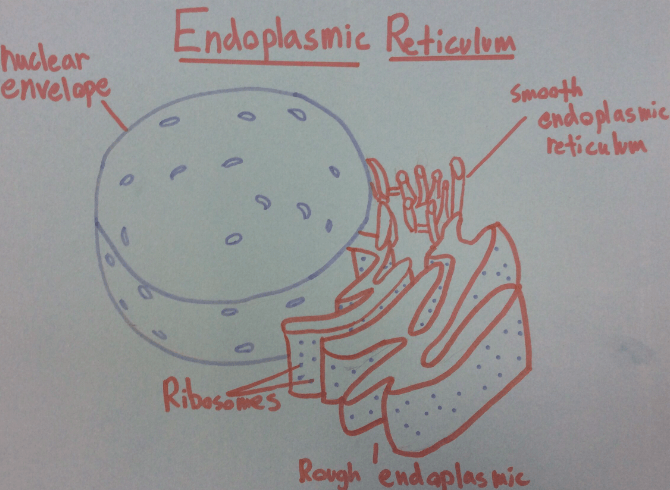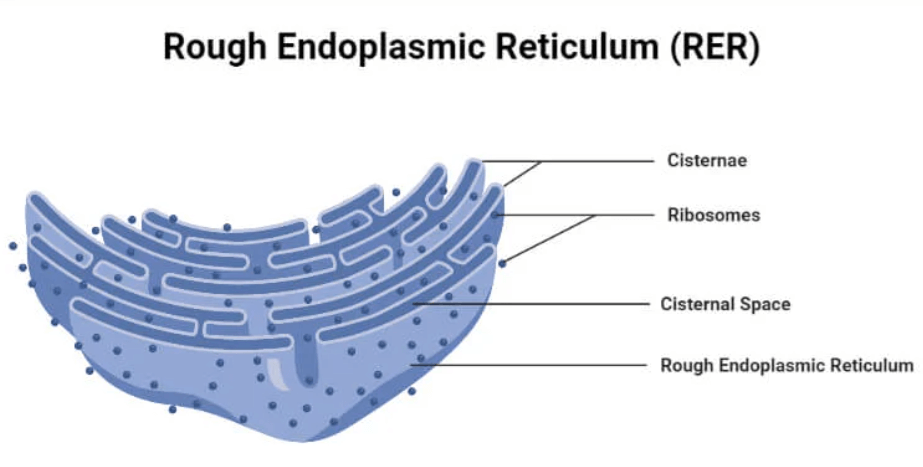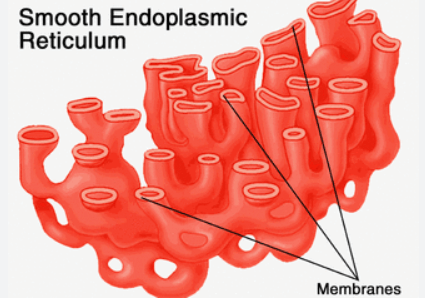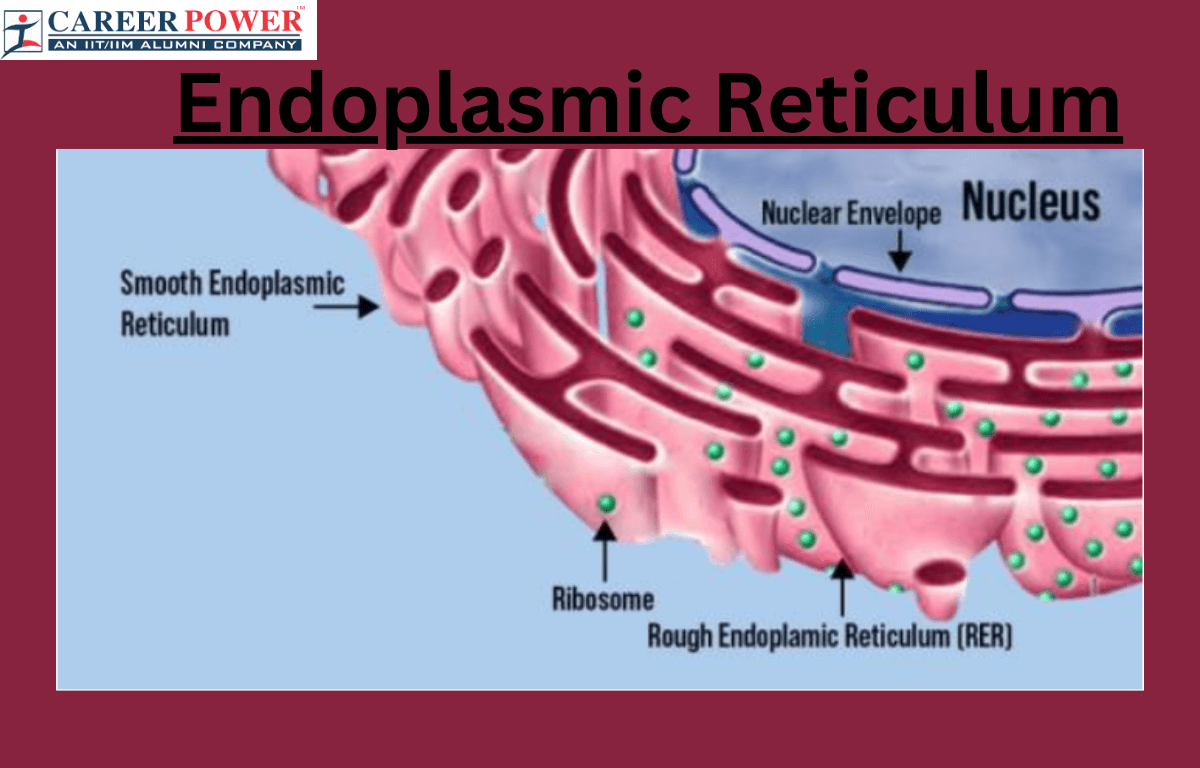The cell is one of the important topics in Biology Class 9. Cell organelles are essential components of a cell, each with specific roles. The nucleus houses genetic material, while mitochondria produce energy. Endoplasmic reticulum (ER) comes in rough and smooth types, contributing to protein synthesis, lipid metabolism, and detoxification. Golgi apparatus processes and packages proteins, and lysosomes break down waste. Cytoplasm holds these organelles, facilitating their interactions and ensuring the cell’s proper functioning. Together, these structures enable cellular activities, making them fundamental to life processes.
Define Endoplasmic Reticulum
The Endoplasmic reticulum (ER) is a vital cell organelle found in Eukaryotic cells, responsible for various cellular processes. It consists of a complex network of membranes. The Endoplasmic Reticulum are classified into two types: Rough Endoplasmic Reticulum (RER) and Smooth Endoplasmic Reticulum (SER). The rough endoplasmic reticulum has ribosomes on its surface and is involved in protein synthesis, folding, and modification, while the smooth endoplasmic reticulum lacks ribosomes and is involved in lipid synthesis, detoxification, and calcium storage within the cell. The Endoplasmic Reticulum plays a crucial role in the synthesis, folding, modification, and transport of proteins and lipids in the cell.

Diagram of Endoplasmic Reticulum
The diagram of the endoplasmic reticulum typically shows a network of membranes within a cell. It can be classified into two types: rough endoplasmic reticulum and smooth endoplasmic reticulum. Where the rough endoplasmic reticulum has ribosomes on its surface and is involved in protein synthesis, while the smooth endoplasmic reticulum lacks ribosomes and is involved in lipid synthesis and detoxification processes within the cell. The diagram illustrates the structure and functions of these organelles, providing a visual representation of their complexity and interconnectedness within the cell.

Types of Endoplasmic Reticulum
There are two main types of endoplasmic reticulum: rough endoplasmic reticulum (RER) and smooth endoplasmic reticulum (SER). Both types of endoplasmic reticulum are interconnected and functionally related, contributing to various essential cellular processes and maintaining the overall integrity and functionality of the cell.
| Types of Endoplasmic Reticulum | |
| Types | Description |
| Rough Endoplasmic Reticulum (RER) | The rough endoplasmic reticulum is studded with ribosomes on its surface. Involved in the synthesis and processing of proteins for secretion and membrane integration. |
| Smooth Endoplasmic Reticulum (SER) | The smooth endoplasmic reticulum lacks ribosomes on its surface. Functions include lipid synthesis, metabolism of carbohydrates, detoxification of drugs, and poisons. |
Rough Endoplasmic Reticulum
The rough endoplasmic reticulum is covered with ribosomes on its surface, giving it a “rough” appearance under a microscope. These ribosomes are the sites of protein synthesis. The rough endoplasmic reticulum is primarily involved in the synthesis, folding, and modification of proteins. Newly synthesized proteins are translocated into the RER, where they undergo post-translational modifications and proper folding. These proteins are then transported to various cellular destinations, including other organelles or the cell membrane.

Smooth Endoplasmic Reticulum
The smooth endoplasmic reticulum lacks ribosomes on its surface, giving it a “smooth” appearance. The smooth endoplasmic reticulum is involved in diverse metabolic processes, including metabolic processes, including lipid synthesis, metabolism of carbohydrates, detoxification of drugs and poisons, and regulation of calcium concentration in the cell. It plays a crucial role in the synthesis of lipids, steroids, and phospholipids. In liver cells, the smooth endoplasmic reticulum is involved in detoxifying harmful substances by enzymatic processes.

Structure of Endoplasmic Reticulum
The endoplasmic reticulum is a complex organelle with a structure that includes a network of membranes within a eukaryotic cell. As we know there are two types of endoplasmic reticulum: Rough endoplasmic and smooth endoplasmic reticulum. Both types of ER are interconnected and function in various cellular processes, contributing significantly to the cell’s overall structure and function.
Structure of Rough Endoplasmic Reticulum
- Membrane Structure: Consists of a network of membranes with a rough appearance due to ribosomes attached due to ribosomes attached to its cytoplasmic surface.
- Ribosomes: Ribosomes are bound to the cytoplasmic side of the membrane, giving it a “rough” appearance. These ribosomes are involved in protein synthesis.
- Lumen: The inner area of the rough endoplasmic reticulum membrane network is called the lumen, where proteins synthesized by the attached ribosomes are processed and folded.
- Protein Synthesis: The rough endoplasmic reticulum is primarily responsible for the synthesis of proteins that are either secreted from the cell, incorporated into the cell membrane, or sent to an organelle called the lysosomes.
Structure of Smooth Endoplasmic Reticulum
- Membrane Structure: Similar to Rough endoplasmic reticulum but lacks ribosomes on its cytoplasmic surface, giving it a smooth appearance.
- Lipid Synthesis: Smooth endoplasmic reticulum is involved in lipid synthesis, including the synthesis of phospholipids, steroids, and fatty acids.
- Detoxification: Smooth endoplasmic reticulum plays a role in detoxifying drugs and poisons in the liver cells.
- Calcium Storage: Smooth endoplasmic reticulum acts as a reservoir for calcium ions, releasing them when the cell needs to signal events such as muscle contraction.
Functions of an Endoplasmic Reticulum
The endoplasmic reticulum (ER) is a vital organelle in eukaryotic cells with two main types: rough ER and smooth ER. Here we have discussed a few functions of the endoplasmic reticulum. These functions make the endoplasmic reticulum a critical organelle in maintaining cellular structure and function.
- Protein Synthesis (Rough ER): Rough ER has ribosomes attached to its surface, which are involved in protein synthesis. It plays a significant role in the synthesis, folding, and modification of proteins.
- Lipid Synthesis (Smooth ER): Smooth ER lacks ribosomes and is involved in lipid synthesis, including phospholipids and steroids. It’s crucial for the production of cellular membranes.
- Detoxification (Smooth ER): Smooth ER is involved in detoxifying drugs and poisons. It contains enzymes that help in breaking down harmful substances, making them less toxic and easier to eliminate from the body.
- Calcium Ion Storage (Smooth ER): Smooth ER stores and regulates cellular processes, including muscle contraction and signaling pathways.
- Transport of Molecules: Both rough and smooth endoplasmic reticulum are involved in the transport of synthesized proteins and lipids to various cellular destinations, either within the cell or outside of it.



 50 Vegetables Name for Kids in English a...
50 Vegetables Name for Kids in English a...
 Food Chain: Definition, Types, Examples,...
Food Chain: Definition, Types, Examples,...
 Human Respiratory System: Definition, Di...
Human Respiratory System: Definition, Di...













